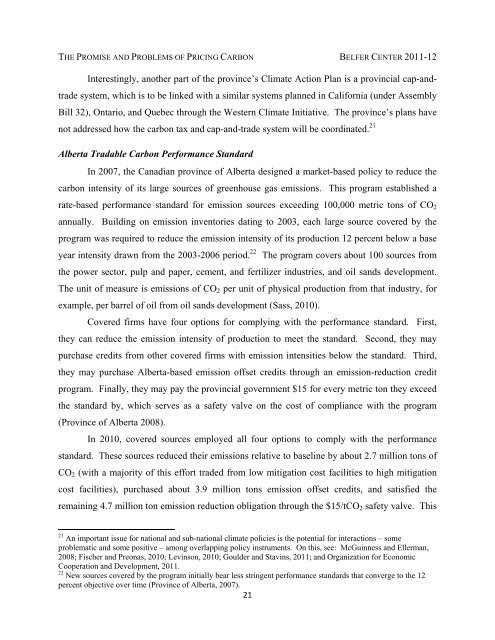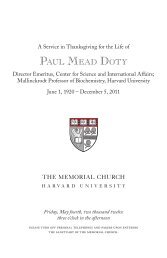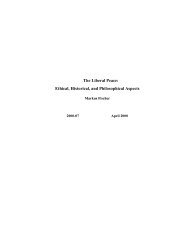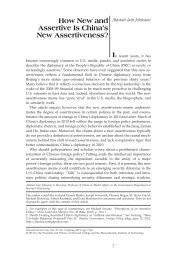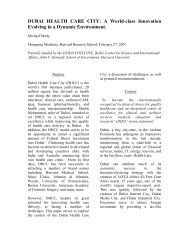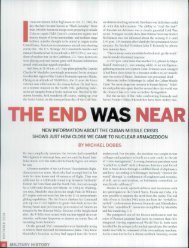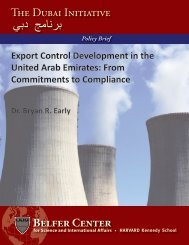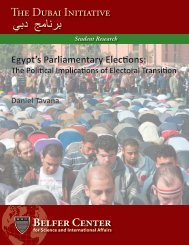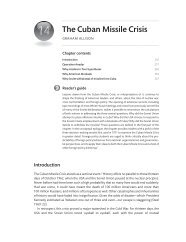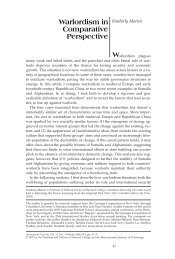The Promise and Problems of Pricing Carbon: - Belfer Center for ...
The Promise and Problems of Pricing Carbon: - Belfer Center for ...
The Promise and Problems of Pricing Carbon: - Belfer Center for ...
Create successful ePaper yourself
Turn your PDF publications into a flip-book with our unique Google optimized e-Paper software.
THE PROMISE AND PROBLEMS OF PRICING CARBON BELFER CENTER 2011-12<br />
Interestingly, another part <strong>of</strong> the province’s Climate Action Plan is a provincial cap-<strong>and</strong>trade<br />
system, which is to be linked with a similar systems planned in Cali<strong>for</strong>nia (under Assembly<br />
Bill 32), Ontario, <strong>and</strong> Quebec through the Western Climate Initiative. <strong>The</strong> province’s plans have<br />
not addressed how the carbon tax <strong>and</strong> cap-<strong>and</strong>-trade system will be coordinated. 21<br />
Alberta Tradable <strong>Carbon</strong> Per<strong>for</strong>mance St<strong>and</strong>ard<br />
In 2007, the Canadian province <strong>of</strong> Alberta designed a market-based policy to reduce the<br />
carbon intensity <strong>of</strong> its large sources <strong>of</strong> greenhouse gas emissions. This program established a<br />
rate-based per<strong>for</strong>mance st<strong>and</strong>ard <strong>for</strong> emission sources exceeding 100,000 metric tons <strong>of</strong> CO2<br />
annually. Building on emission inventories dating to 2003, each large source covered by the<br />
program was required to reduce the emission intensity <strong>of</strong> its production 12 percent below a base<br />
year intensity drawn from the 2003-2006 period. 22 <strong>The</strong> program covers about 100 sources from<br />
the power sector, pulp <strong>and</strong> paper, cement, <strong>and</strong> fertilizer industries, <strong>and</strong> oil s<strong>and</strong>s development.<br />
<strong>The</strong> unit <strong>of</strong> measure is emissions <strong>of</strong> CO2 per unit <strong>of</strong> physical production from that industry, <strong>for</strong><br />
example, per barrel <strong>of</strong> oil from oil s<strong>and</strong>s development (Sass, 2010).<br />
Covered firms have four options <strong>for</strong> complying with the per<strong>for</strong>mance st<strong>and</strong>ard. First,<br />
they can reduce the emission intensity <strong>of</strong> production to meet the st<strong>and</strong>ard. Second, they may<br />
purchase credits from other covered firms with emission intensities below the st<strong>and</strong>ard. Third,<br />
they may purchase Alberta-based emission <strong>of</strong>fset credits through an emission-reduction credit<br />
program. Finally, they may pay the provincial government $15 <strong>for</strong> every metric ton they exceed<br />
the st<strong>and</strong>ard by, which serves as a safety valve on the cost <strong>of</strong> compliance with the program<br />
(Province <strong>of</strong> Alberta 2008).<br />
In 2010, covered sources employed all four options to comply with the per<strong>for</strong>mance<br />
st<strong>and</strong>ard. <strong>The</strong>se sources reduced their emissions relative to baseline by about 2.7 million tons <strong>of</strong><br />
CO2 (with a majority <strong>of</strong> this ef<strong>for</strong>t traded from low mitigation cost facilities to high mitigation<br />
cost facilities), purchased about 3.9 million tons emission <strong>of</strong>fset credits, <strong>and</strong> satisfied the<br />
remaining 4.7 million ton emission reduction obligation through the $15/tCO2 safety valve. This<br />
21<br />
An important issue <strong>for</strong> national <strong>and</strong> sub-national climate policies is the potential <strong>for</strong> interactions – some<br />
problematic <strong>and</strong> some positive – among overlapping policy instruments. On this, see: McGuinness <strong>and</strong> Ellerman,<br />
2008; Fischer <strong>and</strong> Preonas, 2010; Levinson, 2010; Goulder <strong>and</strong> Stavins, 2011; <strong>and</strong> Organization <strong>for</strong> Economic<br />
Cooperation <strong>and</strong> Development, 2011.<br />
22<br />
New sources covered by the program initially bear less stringent per<strong>for</strong>mance st<strong>and</strong>ards that converge to the 12<br />
percent objective over time (Province <strong>of</strong> Alberta, 2007).<br />
21


